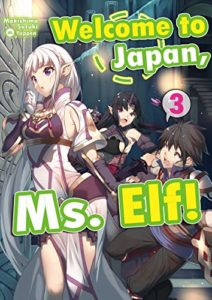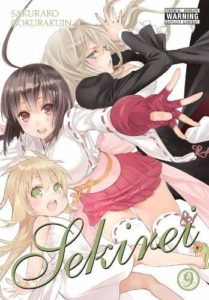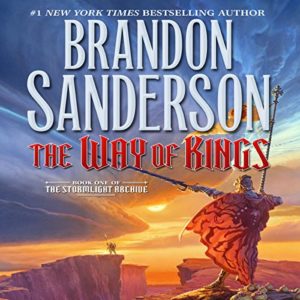Publishing Erotica Part 14 – Promotion
Click here for Publishing Erotica Part 13 – Publication
Now that you’re work is out, it’s time to promote it. But first, let’s talk Short Links. There are plenty of services that will shorten your link and then give you tracking on how many people are clicking on it. Bitly is a major one, but there are others out there. You can use this data to see where people are responding to your promotions. You can use different short links for the same book so you can tell if Facebook or Twitter or another site, like your own blog, gets you better click results.
Another type of short links is the redirect. I use Tiny.cc. Since tinkering with your book on Amazon can lead to them adult dungeoning your book because a reviewer suddenly decides he/she doesn’t like erotica, or worse bans it outright, uploading a new version of your erotica, especially edgy erotica, should be a last resort to fix something major. But you have a series and you want to link to the next book in the current. A book that hasn’t been published yet.
That’s were a link redirect is useful. When you create your ebook, you have the link pointing to a blog post that says: “Book 2 of my naughty erotica isn’t out yet, but here’s a link to my newsletter so you can keep up-to-date on my releases.” Then, when book 2 is out, you merely go to your link redirect and change what the short link points to and suddenly that link at the back of your book now goes to the next part on Amazon.
NOTE: If you do this, make sure that you’re not having a book on Amazon link to a book on Barnes & Noble or vice versa. That will only make the site your book on very angry at you. DON’T MESS THAT UP.
Since the profit on any single erotica isn’t great (remember, with short form erotica, it’s all about building the catalog so you have more visibility and get more sales), promotion can eat into that if you decide to pay for them. And there are a lot of ways you can pay for it. There are a myriad of blogs and services that will send out newsletters to their followers, promote you across Facebook groups, advertise, and more. Some authors find great success with this and others just waste their money.
In short form erotica, paid advertising is not worth it. If you’re writing Romance novellas and novels, then paid advertising can skyrocket you if you choose the right places. But that’s not what this blog is about.
It’s about publishing short form erotica.
So how can you promote for free? There are many ways to do it. There are plenty of blogs out there that will accept reviews for free. You can send your work to them, and if you have a good quality story, you should receive a positive review posted to Amazon, Goodreads, and any other store your story is sold at. These blogs are a great way to get you more exposure.
Building a newsletter following in another. This takes time, and I don’t mean on your part, just time for people to sign-up and grow your numbers. Put in your book (I like to put it at the end in big text) have a call to action to sign up for your newsletter. There are several services that offer free newsletters (up to a certain number of users). I use Mailchimp. It is great. Has lots of templates to customize your newsletter.
Newsletters are great ways to get your stories to your fans. To get people to sign up, you can offer a free ebook or two (maybe something that Amazon banned) to attract interest. While this does get you a larger number of subscribers, many of those subscribers only signed up to get the free ebook then won’t bother clicking through the newsletter to buy new stuff. That’s fine. It’s like any promotion, you’re giving away lots of free books to find those small percentage who will be your fans. If you don’t offer free stuff, your subscriber list takes longer to build, but those subscribers are more likely to click on the links in your newsletter.
Offer sign-up forms on your blog, there are apps to embed it in Facebook, and tweet out the link to sign-up form on twitter.
Having a blog is another great free promotional tweet. Now a blog can’t just be here’s my book. You need to create articles and content that interest readers. Try to do one blog post once every week or two (I know, that can be hard to find the time, something I struggle with). Then promote your blog posts on social media. If people like what you write, they may buy your book. Also, look out for the opportunities to do guest blogs or host guest blogs to get cross-marketing going with another author.
Then there is twitter. Now twitter has downsides. You need to tweet your stuff over and over (and over) to be noticed there. Most people who will follow you on twitter will only be on for a short while and will miss the vast majority of your tweets, so you’ll want to have tweets going out all day. And that’s not possible without some form of automation. Luckily, there are plenty of apps that let you schedule tweets. Tweetdeck, run by twitter itself, allows you to schedule tweets as well as manage multiple twitter accounts on one screen. Hootsuit and Buffer are other options. Hootsuit also remembers your tweets so it’s good for rescheduling them.
To be successful on twitter, you need to learn hashtags. You don’t want to overload your tweet with too many hashtags, that turns off people. Don’t do more than three. One hashtag could be the genre of your erotica: #BDSM #Lesbian #Futanari, etc. Then there are the ReTweet Groups. These are groups that retweet other users who use one of the hashtags. There are a lot of them for all genres of writing from #IARTG (Indie Author ReTweet Group), EARTG (Erotic Authors ReTweet Group), LPRTG (Literary Porn ReTweet Group), #SSRTG (Smart Smut ReTweet Group). The last three are great for our genre.
Then you can join a support group like #IAN1 (independent Authors Network, which requires a 1-time fee to join), #ASMSG (Author Social Media Support Group), #MRBRTG (Mr. Black ReTweet Group used by the Wicked Pen Writers group). They will also retreat your stuff, but don’t use those hashtags unless your a member out of respect.
To get more retweets, it helps to retweet other authors or members of the retweet group you participate in this. You can use Roundteam to automate retweets. They’ll do 10 retweets in a variety of ways from custom made lists of authors you want to help out to specific #hashtags.
Twitter is fine, but don’t spend too much time on it. It is not as useful as reaching readers (though you still can) as Facebook.
Facebook is great, but there are problems with the platform. They are prudish. Be careful on how sexy those pics are you share. No nudity or sexual acts allowed. Those nipples (on women) and genitalia need to be covered up. It can be a fun place. You can interact with other authors and your fans, meet new people, discover new works. You can make a special group for you and your fans to interact with and encourage them to post your work, and there are plenty of other groups for posting promos in.
Then there are Facebook parties.
There is no better free advertising tool for a writer than a Facebook party. Most are release parties. Authors with a new release will hold an all day event with 1/2 or hour slots open for you to takeover their party and promote your own books, hold contests, interact with your fans and other author fans who have come to the event. You’ll meet new people, showcase your work, earn new interest. You can make wonderful friends.
So be on the watch for those parties. Slots can fill fast. And, of course, don’t be afraid to host one of your own once you understand how they work.
Now Facebook lets you create an Author page, but those don’t get the same visibility as a personal page does (it seems every time Facebook changes their viewing algorithms, Author Pages get less and less visibility). So anything you post on your Author page share to your personal page so your friends and fans can see it.
You can also advertise on Facebook, but they will kill any add promoting erotica. Amazon, likewise, will not let you advertise your erotica with them.
So remember for free promotion: seek out free review blogs, build a newsletter, create your own blog with unique content, use twitter to tweet your book using appropriate hashtags, and get on Facebook and seek out those Facebook parties.
Now before you get into all your promotion, let’s talk how you can make money promoting your own book and others—Amazon Associates. This is a service Amazon offers to pay you to advertise their products on your blog and other platforms. You sign-up with your regular Amazon account and if they approve you (you will need a blog to get approval), then you will get the ability to create unique Amazon links with a tag in it. If anyone clicks on these links (say to your book your promoting) and then buys anything on Amazon (including your book) for the next hour or so, you get a small percentage of the sale paid to you as a referral. Since you’re going to be promoting your book, linking to your back catalog, and maybe even helping other authors promote their work, you can start to make money with your own advertising.
Now it’s not a lot of money. When I started out doing this, it took me three months to hit the threshold of a payout ($30). But there is no downside to me. I would have promoted those links with or without having an Amazon Associate Account. These days, I make as much on advertising as I do from the smaller Amazon Marketplaces (not the big ones US, UK, AU, CA, DE, yes Germany buys a lot of English erotica vying for third place with AU and CA).
If you feel you need to pay for advertising, just research before you do. Talk to other authors, find out what has worked and did not work for them in the past. Don’t just trust that a random blog charging you $30 to be in their newsletter will do anything to generate you sales.
Click here for the final part: The Business Side.



 by
by 





 by
by 
 I started reading Welcome to Japan Ms. Elf Vol. 3. This is both an isekai and reverses isekai series. The main character, Kazuhito, has been traveling to a fantasy world that works like an MMORPG since his childhood in his dreams. Every night, he continues his adventures. One of his friends is a cute elf named Mirabella. One day while poking in a cave in the other world, the awaken a dragon.
I started reading Welcome to Japan Ms. Elf Vol. 3. This is both an isekai and reverses isekai series. The main character, Kazuhito, has been traveling to a fantasy world that works like an MMORPG since his childhood in his dreams. Every night, he continues his adventures. One of his friends is a cute elf named Mirabella. One day while poking in a cave in the other world, the awaken a dragon. I finished reading all of the Sekirei Manga this week. What a ride this story is. It has lots of harems going on as various men have groups of hot and cute women that they bond. With 108 of them, there’s plenty to go around. Musubi continues to be my favorite.
I finished reading all of the Sekirei Manga this week. What a ride this story is. It has lots of harems going on as various men have groups of hot and cute women that they bond. With 108 of them, there’s plenty to go around. Musubi continues to be my favorite. In honor of the fourth Stormlight Archive book having a release date in November, I have started listening to The Way of Kings. at 45 hours, it’s going to keep me occupied for a while. I rather enjoy this epic fantasy series. I enjoy the magic system and the characters. If you want to really dig into a long series, this is a great one to read. Of course, we’re not even halfway through it. Brandon Sanderson said it’s 10 books, but really two five-book series.
In honor of the fourth Stormlight Archive book having a release date in November, I have started listening to The Way of Kings. at 45 hours, it’s going to keep me occupied for a while. I rather enjoy this epic fantasy series. I enjoy the magic system and the characters. If you want to really dig into a long series, this is a great one to read. Of course, we’re not even halfway through it. Brandon Sanderson said it’s 10 books, but really two five-book series. This week at iStripper so the release of the always sexy Melena Maria Rya, who has some of the hottest cards. THis time, she’s being a naughty girl playign with her stuffed unicorn. It is one hot card. I will admit that Eva Elfie (another fav) had a hot card, too. Her NieR Automata cosplay show is naughty, but sexy Malena just edged her out.
This week at iStripper so the release of the always sexy Melena Maria Rya, who has some of the hottest cards. THis time, she’s being a naughty girl playign with her stuffed unicorn. It is one hot card. I will admit that Eva Elfie (another fav) had a hot card, too. Her NieR Automata cosplay show is naughty, but sexy Malena just edged her out.












